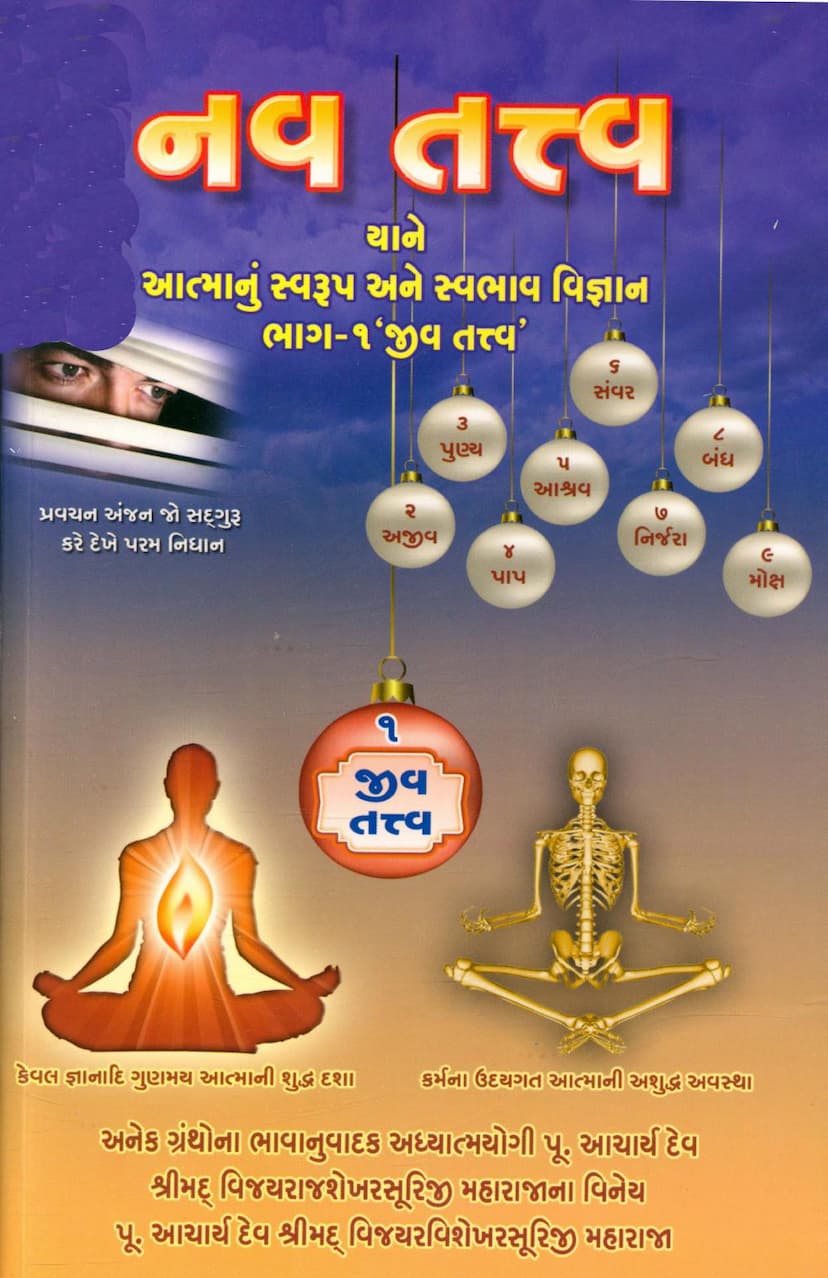Navtattva Part 01
Added to library: September 2, 2025

Summary
This document is a summary of "Navtattva Part 01" by Acharya Vijayravikhesuri. It is a comprehensive exploration of Jain philosophy, focusing on the "Jiva Tattva" (Soul) as part of the nine fundamental principles of Jainism.
The book delves into the nature and characteristics of the soul, contrasting its pure, liberated state (characterized by omniscience and other divine qualities) with its impure state, bound by the influence of karma.
Key Themes and Concepts:
- Navtattva as a Science of the Soul: The nine tattvas (Jiva, Ajiva, Punya, Pap, Asrava, Samvara, Bandha, Nirjara, Moksha) are presented as a path to understanding the soul's true nature and destiny.
- Nischaya and Vyavahara Naya: The text emphasizes the importance of understanding these two perspectives to grasp the soul's essence. Nischaya naya refers to the ultimate, pure reality of the soul, while Vyavahara naya deals with its worldly manifestations and practices.
- The Soul (Jiva Tattva):
- The soul is described as inherently pure, possessing qualities like omniscience and bliss.
- Its impure state arises from the influx and bondage of karma.
- The text details the various classifications of souls, including the 14 types of Jiva (souls) based on factors like consciousness, senses, life-span, and the number of senses.
- It discusses the soul's journey through different states of existence, the suffering in hellish realms and lower births, and the causes of suffering (karmas).
- The concept of "Aavashyak" (essential duties or practices) is explored, both those performed due to karmic conditions and those prescribed by enlightened beings for liberation.
- The Role of Karma: Karma is presented as the root cause of the soul's impurity and suffering. The text explains how karma binds the soul and obscures its pure nature.
- Path to Liberation (Moksha): The ultimate goal is liberation, achieved through the eradication of karma. This involves understanding the tattvas, practicing right faith (Samyak Darshan), right knowledge (Samyak Jnana), and right conduct (Samyak Charitra).
- Practices and Principles: The book emphasizes practices like meditation (Dhyana), self-control (Samyama), austerity (Tapas), ethical conduct (Achar), and detachment from worldly pleasures.
- The Importance of Guru and Scripture: The guidance of an enlightened spiritual teacher (Guru) and the study of scriptures are highlighted as crucial for spiritual progress.
- Samyak Darshan as the Foundation: The text stresses that true understanding and liberation begin with Samyak Darshan (right faith), which involves recognizing the soul's true nature and the reality of the tattvas.
- The Nature of Suffering: The book explains how attachment to worldly desires, senses, and the cycle of birth and death leads to suffering.
- The Ultimate Goal: Pure Soul: The ultimate aim is to realize the soul's pure, unadulterated, and liberated state, which is the state of Siddha.
The summary emphasizes the deep spiritual insights within the text, aiming to guide the reader towards self-realization and ultimate liberation. The detailed explanation of the nine tattvas serves as a roadmap for understanding the soul's predicament and the path to its salvation.